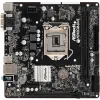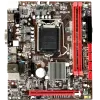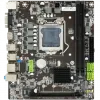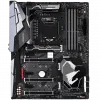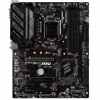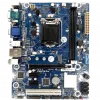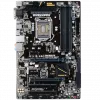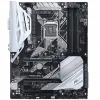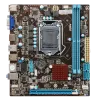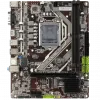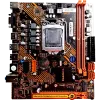LGA 1151, also known as Socket H4, is an Intel microprocessor compatible socket which comes in two distinct versions: the first revision which supports both Intel's Skylake and Kaby Lake CPUs, and the second revision which supports Coffee Lake CPUs exclusively.
LGA 1151 is designed as a replacement for the LGA 1150 (known as Socket H3). LGA 1151 has 1151 protruding pins to make contact with the pads on the processor. The voltage regulator has again been moved from the CPU die to the motherboard.
Most motherboards for the first revision of the socket support solely DDR4 memory, a lesser number support DDR3(L) memory, and the least number have slots for both DDR4 or DDR3(L) but only one memory type can be installed. Some have UniDIMM support, enabling either type of memory to be placed in the same DIMM, rather than having separate DDR3 and DDR4 DIMMs. The second revision socket motherboards support only DDR4 memory.
Skylake, Kaby Lake and Coffee Lake chipsets support Intel Rapid Storage Technology, Intel Clear Video Technology, and Intel Wireless Display Technology (an appropriate CPU is required). Most motherboards with the LGA 1151 socket support varying video outputs (DVI, HDMI 1.4 or DisplayPort 1.2 – depending on the model). VGA output is optional because Skylake CPUs dropped support for this video interface. HDMI 2.0 (4K@60 Hz) is only supported on motherboards equipped with Intel’s Alpine Ridge Thunderbolt controller.
Skylake, Kaby Lake and Coffee Lake chipsets do not support the legacy conventional PCI interface; however, motherboard vendors may implement it using external chips.
Heatsinks for sockets LGA 1151, 1150, 1155, and 1156 are interchangeable as they all have the same distance of 75 mm between each screw hole.
